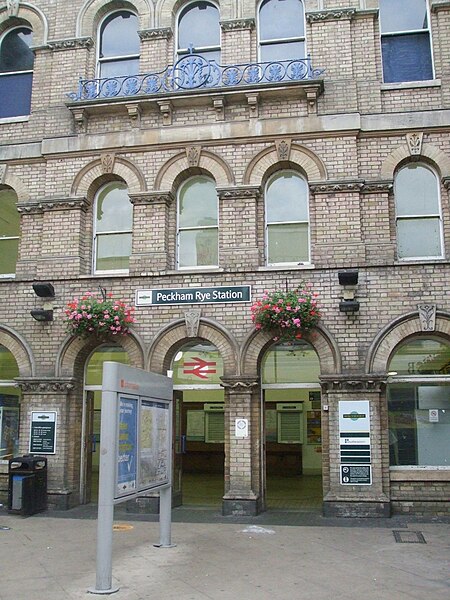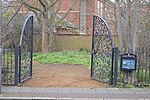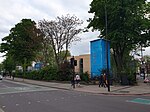Peckham Rye railway station
Charles Henry Driver railway stationsDfT Category D stationsFormer London, Brighton and South Coast Railway stationsLondon stations without latest usage statistics 1415London stations without latest usage statistics 1516 ... and 7 more
Rail transport stations in London fare zone 2Railway stations in Great Britain opened in 1865Railway stations in the London Borough of SouthwarkRailway stations served by London OvergroundRailway stations served by SoutheasternThameslink railway stationsUse British English from August 2012

Peckham Rye is a railway station in Peckham town centre, South London. It opened on 1 December 1865 for LC&DR trains and on 13 August 1866 for LB&SCR trains. It was designed by Charles Henry Driver (1832–1900), the architect of Abbey Mills and Crossness pumping stations, who also designed the grade II listed Denmark Hill and Battersea Park stations between here and London Victoria.
Excerpt from the Wikipedia article Peckham Rye railway station (License: CC BY-SA 3.0, Authors, Images).Peckham Rye railway station
Blenheim Grove, London
Geographical coordinates (GPS) Address Nearby Places Show on map
Geographical coordinates (GPS)
| Latitude | Longitude |
|---|---|
| N 51.46989 ° | E -0.06886 ° |
Address
Blenheim Grove 2
SE15 4BQ London (London Borough of Southwark)
England, United Kingdom
Open on Google Maps








